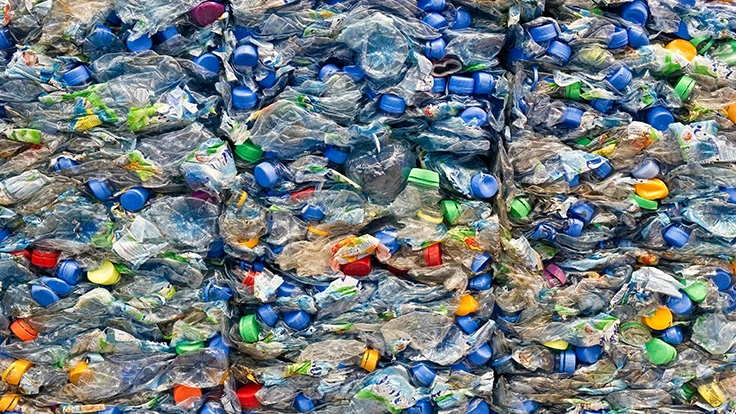
Photo: Dreamstime
The United States achieved a recycling rate of 30.1 percent for polyethylene terephthalate (PET) plastic bottles in 2015, according to the recently released “Report on Postconsumer PET Container Recycling Activity in 2015” from the National Association for PET Container Resources (NAPCOR), Florence, Kentucky, and the Association of Plastic Recyclers (APR), Washington. The 2015 rate is down slightly from the 31 percent rate reported for 2014, reflecting a slight year-over-year decrease in U.S. PET bottle collection volumes and an increase in the total volume of PET bottles available for recycling in the U.S., the associations say.
“The PET reclaiming industry continued to sustain U.S. recycling collection programs in 2015, producing more than a billion pounds of recycled PET feedstock for domestic end markets,” says Tom Busard, NAPCOR chairman and chief procurement officer for Plastipak Packaging Inc. and president of Clean Tech, Plastipak’s recycling affiliate. “This was no small task, given the global economic challenges we faced, including very low virgin prices and some softness in end market demand. Despite tough times, our industry held its own, as did our recycling program suppliers.”
In 2015 1,797 million pounds of PET bottles were collected, while the volume of PET bottles in the marketplace and potentially available for recycling increased to 5,971 million pounds. PET bottle bales purchased by export markets, including Canada, were up 2 percentage points over the 10-year low reported in 2014, representing 24 percent of total postconsumer PET volumes collected in 2015. Exports to Asia and other markets outside North America dropped by more than 5 percent, continuing the steep decline that began in 2011, according to the report. Total domestic end use of recycled PET decreased from 1,564 million pounds in 2014 to 1,421 million pounds in 2015. Key packaging markets, including sheet and bottles, maintained a steady demand, while rPET (recycled PET) use in fiber markets dropped. This reduction is likely in light of low virgin resin prices and broad availability of low-cost, alternative streams such as postindustrial and off-spec materials, driving more price sensitive RPET consumers in fiber markets to other feedstocks, the associations say.
“This is a positive report,” says J. Scott Saunders, APR chairman and general manager of KW Plastics Recycling Division, Troy, Alabama. “It clearly demonstrates the strength of the plastics recycling market to maintain market share in the face of the significant global economic slowdown, coupled with the precipitous drop in virgin feedstock prices. We must continue to address key issues in the recycled PET supply chain, such as increasing quality collection, improving processing systems, and designing PET bottles for recyclability.”
Both NAPCOR and the APR say they continue to work to address the industry’s ongoing challenges, with particular focus on how to maximize the capture of PET from the waste stream, improve efficiency in processing, reduce non-PET contamination in recycling streams and encourage awareness and understanding of “design for recyclability” principles. This is the 11th year that NAPCOR and the APR have partnered to produce this report and the 21st year that it’s been issued by NAPCOR in its current format. The full report can be found on the NAPCOR and APR websites at www.napcor.com/pdf/NAPCOR_2015RateReportFINAL.pdf and at www.plasticsrecycling.org/images/pdf/resources/reports/Rate-Reports/APR_NAPCOR_2015RateReport.pdf, respectively.
An informational webinar about the report is scheduled for Tuesday, Oct. 18, 2016, at 1 p.m. EST. Those interested in joining the webinar can register at https://attendee.gotowebinar.com/register/4187306789252671233.
Latest from Recycling Today
- Celsa Group welcomes new Spanish investor
- Ferrous price hikes may be poised to pause
- BIR prepares for Spanish exhibition
- Copper exempted from latest round of tariffs
- Interchange Recycling's EPR stewardship plan approved in Yukon
- Making the case for polycoated paper recovery
- Novolex, Pactiv Evergreen finalize merger
- In memoriam: Danny Rifkin







